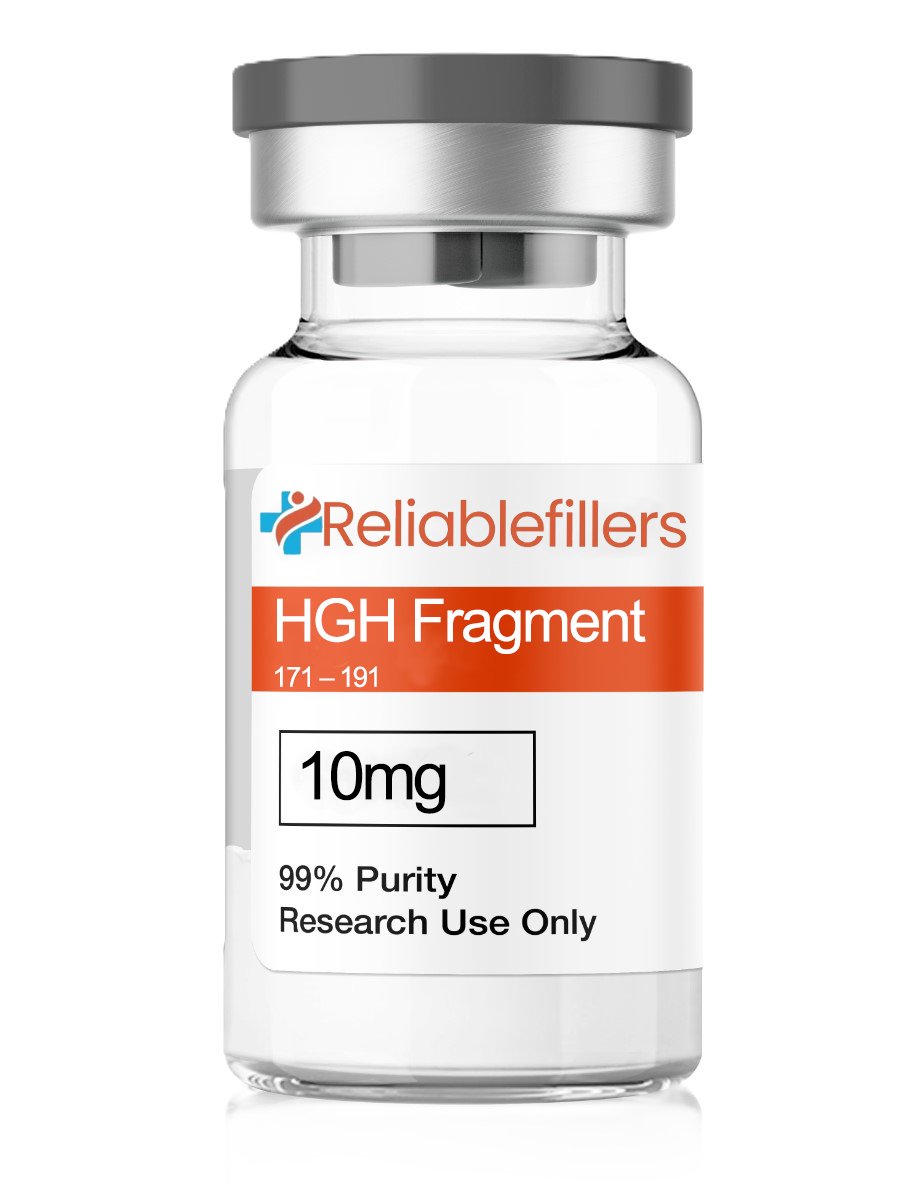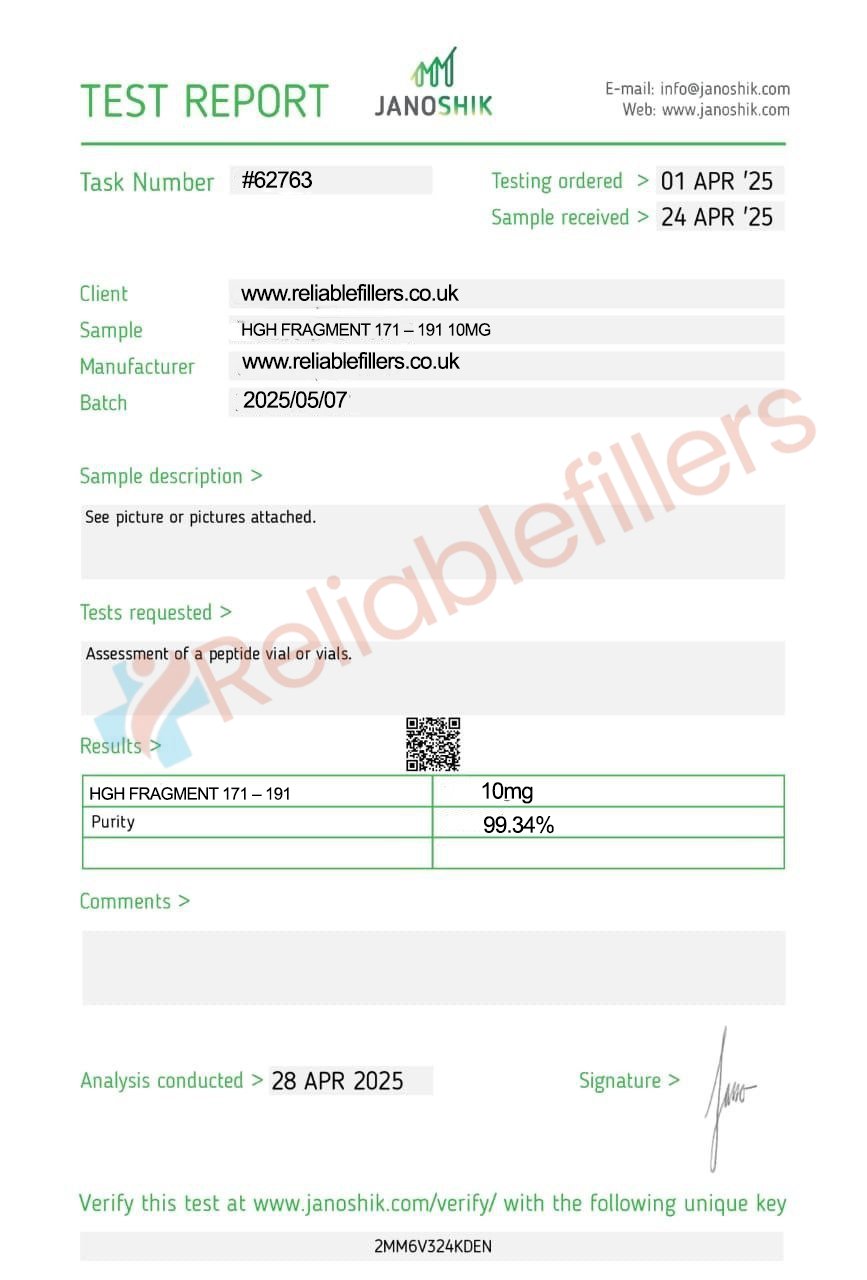HGH Fragment 171 – 191 10mg
Fragment 176-191 is a modified peptide derived from human growth hormone (HGH) that contains only a small section of the original molecule – amino acids 176 to 191. Scientific interest focuses on its ability to selectively influence fat metabolism without significantly affecting growth processes.
HGH Fragment 176-191 is a laboratory-created fragment of the naturally occurring human growth hormone (hGH). It is also called the “lipolytic fragment” and it has the potential to help with fat loss. It has been shown to decrease blood sugar levels and help with repairing cartilage—without impacting IGF-1 levels, altering the insulin response, or stimulating bone growth. This makes it an excellent option for focused fat reduction and recovery support.
How does HGH-Fragment Work?
The specific mechanism through which HGH-FRAG operates is not yet defined and remains in controversy among scientists. Still, several studies in animals have identified certain areas where HGF-FRAG appears to have critical influences.
As opposed to the unbroken Growth Hormone, HGH-FRAG does not transfer all the attributes of its parent hormone. Instead, it retains only a single key function: stimulating the breakdown of fat, or lipolysis. In the experiment of obese mice, HGH-FRAG 176-191 was determined to stimulate the formation of beta-3 adrenergic receptors in the fat cells.
These receptors play an important role in mobilizing and utilizing lipids that are stored in fat tissue. They also aid in thermogenesis – the production of heat—particularly in skeletal muscle tissue.
In an experiment, obese mice that were given HGH-FRAG for three weeks recorded a reduction in weight gain of approximately 50%.
Fat Burning and Weight Loss
Fragment 176-191 is also called the “lipolytic fragment” because of its highly lipolytic fat-burning activity seen in mouse experiments. The peptide was found to significantly increase the breakdown of fat and weight loss in experiments. This action is seen to be associated with an augmentation in beta-3 adrenergic receptor (ADRB3) activity, which is used for fat breakdown in fat tissue and for heat production in the muscles. Interestingly, these receptor-deficient mice are unresponsive to the fat-loss action of this fragment’s or normal hGH’s, which shows the significance of the receptor. Additional research has shown that animals administered fragment 176-191 underwent dramatic weight loss, particularly animals that had more body fat.
Obese mice in one study showed almost 50% decrease in weight gain over three weeks. No effects were seen with lean mice, implying that the compound affects fat metabolism in obese subjects primarily. These findings also imply the existence of additional fat-burning mechanisms that may be functioning when ADRB3 is not necessary or not functioning—a new research area with much potential for elucidating how the body regulates energy balance.





Reviews
There are no reviews yet.